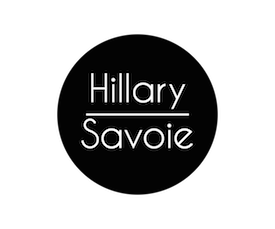Today’s Feeding Tube Awareness Week topic is about coping with life with a feeding tube…and it got me thinking about the early days of tube feeding, when we certainly were just barely coping.
I can remember in the first few months of having her tube I had feelings of failure, anger, and fear. I wanted nothing more than for her to start eating by mouth again. I was afraid that no one else would ever learn how to feed and vent her. I thought that we would be stuck at home, hiding from the curious stares of strangers.
In many ways, the tube became a focus for all of my fears about Esmé’s future: her differences, her isolation, her dependence on me. And the tube was an easy scapegoat. Early on it was the most identifiable “difference” about Esmé. Every time she ate, or her little shirt worked its way up exposing her tummy she was “outed” as a medically fragile child. And I found the tube was one of the things that people felt comfortable asking about. Rather than try to formulate difficult to broach questions about her medical status and future (questions we are still trying to formulate and answer ourselves), they could ask simply “Will she have the tube forever?” or “Will she ever eat normally?”
Over the years my answer to that has changed. I still hope that Esmé will be able to eat some orally…to enjoy the social aspects of eating, to try unusual flavors and get comfort from the familiar tastes, to look forward to birthday cake or lobster or summer tomatoes or freshly picked wild strawberries. But her tube is not going anywhere. Almost three years after her tube placement surgery, I cannot imagine life without Esmé’s feeding tube. It is her lifeline. It keeps her thriving and safe. It keeps her home from the hospital when she is sick. It keeps life-saving medications in her system, no matter what.
I no longer question our decision to tube feed her. It is no exaggeration to say that without her tube she would not be alive. But even though all of that is true, it isn’t always an easy thing to cope with.
While are not stuck at home, and we have embraced her tube and feeding her in public, when people stare it still gets to me sometimes. I still want people to be unafraid of her tube and to understand that she is just a kid who eats a bit differently. I want other children to not be shushed when they want to ask questions about how she eats (because they are never the ones troubled by the tube, only their parents are!). But I have coped with this by devoting myself to educating others about Esmé’s feeding tube. I try to remain open to questions (even the ones that sting a little because of their wording). I try to show that I am not afraid of her tube, that I have a sense of humor about it, and that I am not sorry for her for eating this way–rather that I am proud that this device is there to keep her alive!
The harder part is the support system for feeding her. There are a truly limited number of people who know how to feed her. Even in the hospital the nurses do not feed Esmé because she has had a very difficult time tolerating her food. So in order to prevent retching and vomiting (and potential aspiration) we have developed an art to feeding and venting Esmé. Aside from our myself and my hubby there are maybe 5 or 6 other people in the world who know how to care for Esmé’s feeding needs in the way we do.
I know others can learn, though.
Early-on several of our cousins were visiting from Montréal. They had been there for a day and watched how frequently Esmé would start retching. They saw how we would very quickly “vent” her by hooking her up to an open 60 mL syringe and opening the tube so all the gas in her tummy would come rushing out. Ezzy was in with one of them and her husband while my hubby and I were preparing coffee in the kitchen. I heard Ez start retching and came rushing in to find her cradled in our cousin Pascale’s arms, already being vented. She had seen it enough, knew what needed to be done, and just did it…and I was so amazingly pleased to see my child being cared for by someone else–the way another experienced mother might know to burp or rock or feed any other baby.
It is funny because, looking back, I know that moment gave me so much hope for Esmé’s life with her tube. I knew in that moment that if we surrounded ourselves with people who love Esmé and helped them feel invested in her care that they would all learn when and how they were ready.
And that is how we cope…with love and hope.

